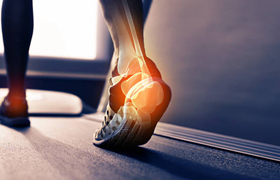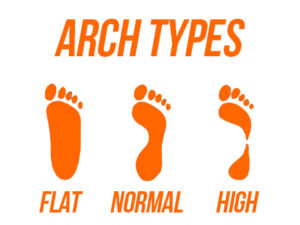Garmin Fenix 7X Sapphire Solar Edition Running Watch – Carbon Grey/DLC Titanium/Black
Description
The Garmin Fenix 7X Sapphire Solar Edition Running Watch has a large, scratch-resistant 1.3″ solar charged display with a 51mm case. The Power Sapphire™ solar charging lens uses energy from the sun to extend the battery life. Get up to 28 days of battery life in smartwatch mode with an additional 9 days when solar charging. In GPS mode it’s up to 89 hours with an additional 33 hours when solar charging**. All the extra power will be useful when you’re using the advanced training features and sports apps, as well as the health and wellness monitoring sensors that work continuously to provide you with an overall outlook of your health and fitness levels. With a new touchscreen interface along with the usual button controls, you have quick access to all functions and selections. Load up activity profiles for trail running, swimming, running, biking, hiking, rowing, skiing, golfing and more. All the specifications of a running watch to help you measure your performance and progress on the large, clear display and much more. The PacePro™ feature will give you guidance on your pace depending on the terrain. The wrist-based heart rate with Pulse Ox sensors that use light sensors at your wrist at altitude or while sleeping to gauge how well your body absorbs oxygen. Safety and tracking features make it impossible to get lost and will send messages to emergency contacts if needed. Store up to 2000 songs or access preloaded streaming apps to listen to with Bluetooth headphones and receive smart notifications when paired with a compatible device
Features
- Power Glass™ solar charging lens
- PacePro™ feature determines terrain
- Wrist-based heart rate and Pulse Ox sensors
- Pre-loaded activity profiles for running, swimming, cycling, hiking, rowing and more
- Advanced training metrics
- 260 x 260 pixels display resolution
- Smart notifications
- Storage for up to 2000 songs
- Garmin Pay contactless payment solution
- Safety and tracking features
- Connect IQ store
- 47mm diameter watch housing
- Smartwatch: Up to 28 days/9 additional days with solar*
Battery Saver Watch Mode: Up to 57 days/173 days with solar*
GPS Only: Up to 89 hours/122 hours with solar**
All Satellite Systems: Up to 63 hours/77 hours with solar*
All Satellite Systems and Multi-band: Up to 36 hours/ 41 hours with solar**
All Satellite Systems and Music: Up to 16 hours
Max Battery GPS: Up to 213 hours/ 578 hours with solar**
Expedition GPS: Up to 62 days/ 139 days with solar*
*Assumes all-day wear with 3 hours per day outside in 50,000 lux conditions.
**Assumes continuous use for entire period in 50,000 lux conditions.
Additional information
| Colour | |
|---|---|
| Size |
Returns Info
SUBSIDISED TRACKED RETURNS SERVICE
If you intend to return any items, please use the Royal Mail Returns service to create a tracked label, then print this off and attach it to your parcel
Please access our ROYAL MAIL TRACKED RETURNS portal Click Here.
We provide subsidized tracked returns for £3 for up to 2 items. For more than 2 items, a fee of £6 will apply.
When sending your item back for a refund, the subsidised charge will be deducted from your refund.
When sending your item back for an exchange, the subsidised charge will be deducted from your payment card.
Please indicate whether you request an exchange or a refund using the provided Returns Form – these are packaged with every order, so please complete this and include it (or download The Running Outlet Returns Form PDF here).
Alternatively, if customers choose to return their order using an alternative return method, please return to the following address:
The Running Outlet
26 Burgate,
Canterbury,
Kent,
CT1 2HA,
UK
therunningoutlet.co.uk is not liable for returned items lost in transit when using the Royal Mail portal. Refunds will only be issued once the item has been successfully delivered to the store.
Buying Guide
Picking the right shoe for you.
Consider coming into a store and doing a video gait analysis. Gait analysis monitors your body’s movement and your feet (sports biomechanics) whilst running. It’s commonly used to help athletes run more efficiently and to identify movement related problems for people with injuries who are seeking new running shoes.

During gait analysis you will be asked to walk and run on our in-store treadmill whilst your movements are recorded using the latest Daftfish software. A slow-motion, detailed analysis will show and explain your biomechanics, specifically looking at pronation, the inward-turning movement that occurs when your foot touches the ground. During walking and running this acts as cushioning for the body.
Everyone’s gait is slightly different, but there are four main types of running styles and pronation:
- Neutral Pronation
- Over Pronation
- Under Pronation, also known as Supination
- Forefoot runners
It’s very important to know your running gait so that we can advise and fit the correct shoes according to your own individual requirements.
Can’t get into store? Try a wet foot test
Step onto a piece of heavy duty paper, card or even a bathroom tile and look at the footprint you leave behind. Seeing how much of the sole is visible in the footprint will help you determine the type of arch you have and which category of shoe you will need to buy.

Flat: A flat footprint indicates that your aches are flat and therefore will need support. As your foot hits the ground your arch collapses in order to absorb the impact. If your arch collapses excessively, this is called overpronation and can lead to the ankle rolling excessively which over time causes some runners to develop pain. Overpronation in the arch can affect the whole body and cause discomfort in the heel, ankles, achilles tendons, shins, outside knee, outer hip, as well as the arches.
Normal: A normal footprint would indicate that the arches are high and therefore offer the neural support a runner needs. A neutral shoe makes up roughly 80% of available running shoes and have the same level of cushioning in the heel and the forefoot making it suitable for a large section of runners.
High: A high arch would indicate supination, the opposite to overpronation. The runner’s arch does not collapse very much at all which can lead to less shock absorption. This will concentrate the force of the impact toward the outside area of the forefoot leading to some runners that supinate experiencing foot pain or even stress fractures as a result. Runners that supinate may want to consider a highly cushioned neutral running shoe. The greater level of cushioning in these shoes can help absorb more of the shock from impact.
Size is important
Seasoned runner – if it’s not broken why change?
If you have had a good experience with your old shoes and have stayed injury free then you might, understandably, be reluctant to change brand or model. Be sure to look at the latest version of your current shoe as most popular styles tend to be slightly tweaked rather than completely redesigned when updated. The fit and feel is always very similar if not exactly the same. It’s evolution rather than revolution!
Wear and Tear
Comfort is KEY!

EMAIL NEWSLETTER
FOLLOW US ON
CONTACT US
CUSTOMER SERVICES
INFORMATION
MY ACCOUNT
All major debit & credit cards accepted









